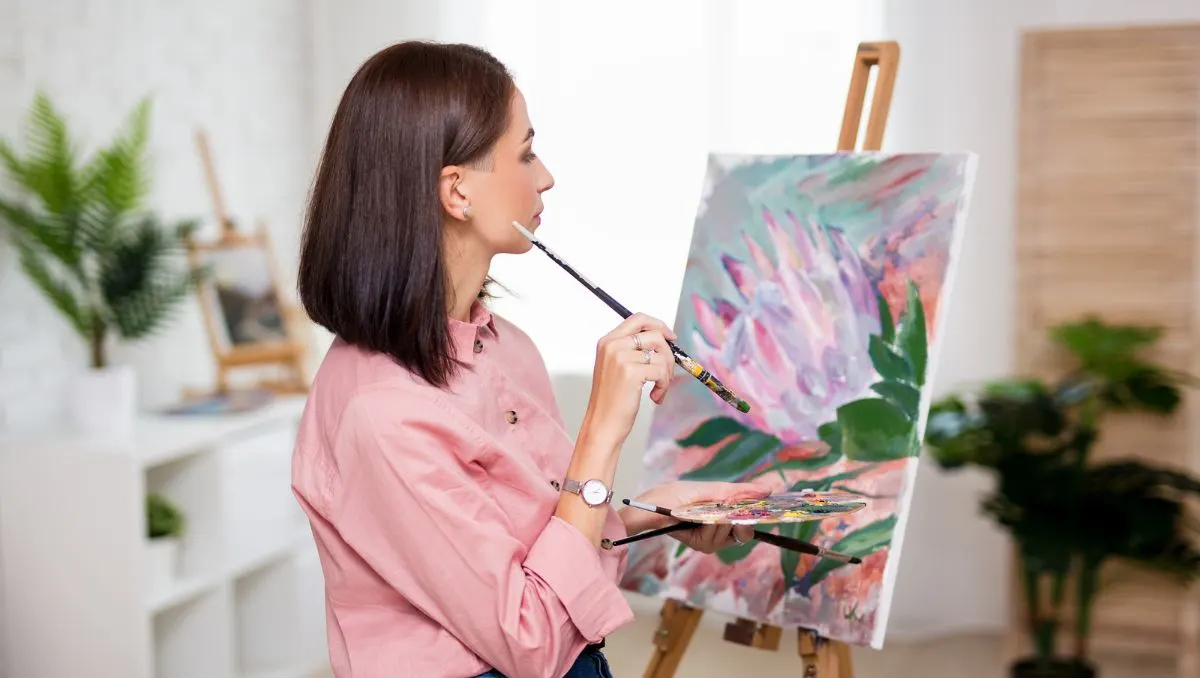Maroon is a deep and rich color that has found its place in fashion and interior design history.
Its earthy quality adds warmth and richness, giving it an air of sophistication.
The regal color is popular in uniforms and militaries worldwide due to its association with a strong and noble type of person.
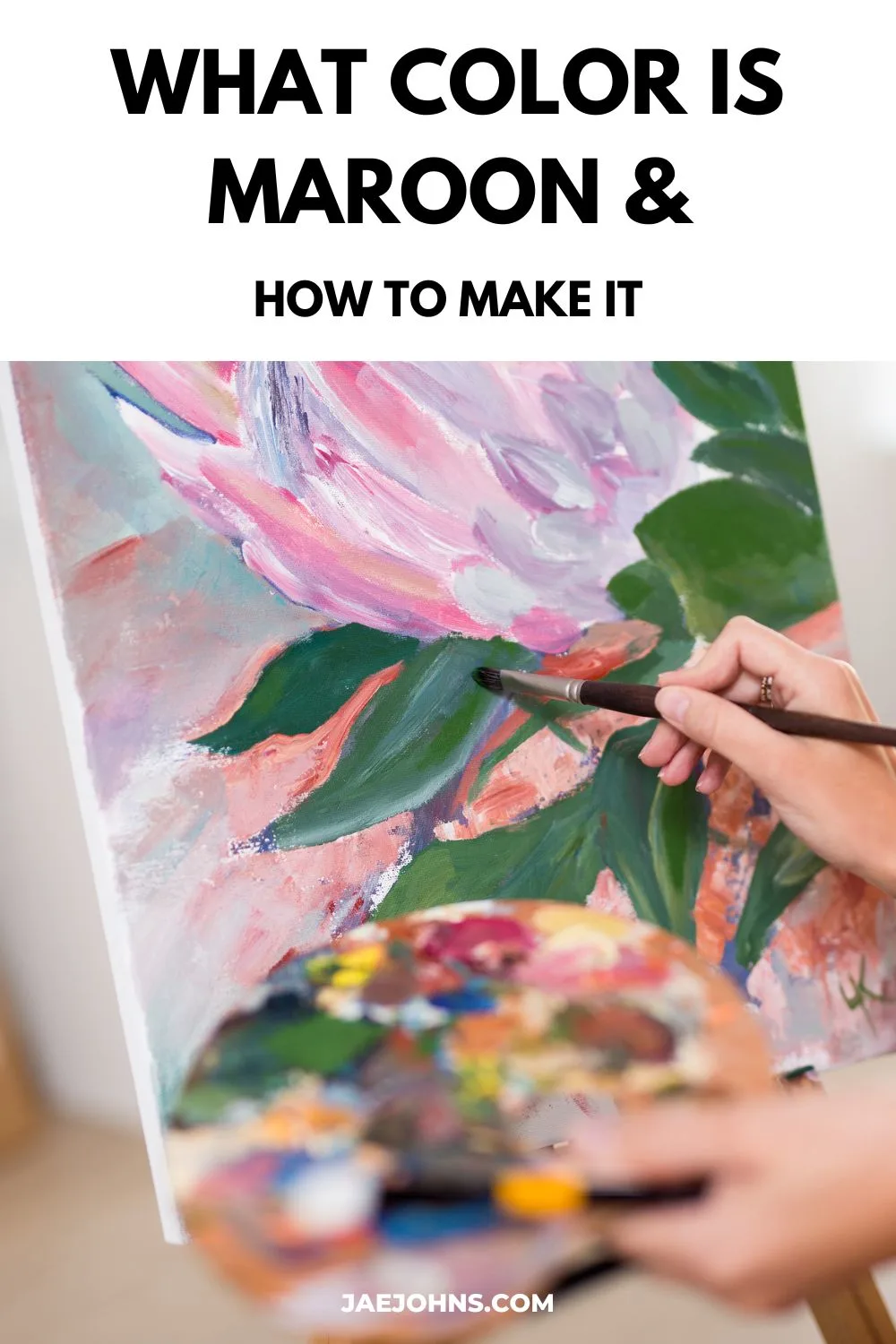
What Color Is Maroon?

Maroon is a dark red-brown color that is more red than burgundy yet more brown than crimson. Its hex code is #800000.
Maroon is commonly associated with a deep, passionate color, representing things like earth and blood. It also has close ties to Buddhism, as it is the main color of Buddhist robes and is commonly found in Buddhist temples.
Thus, for many people, it is also a deeply spiritual color.
What does Maroon Look Like?
Maroon can look brown in some lights or dark red in others. For example, in web developer hex charts, it is typically categorized in the browns.
However, when observed by the naked eye, it feels very close to many red colors on those same charts.
Maroon Color Names
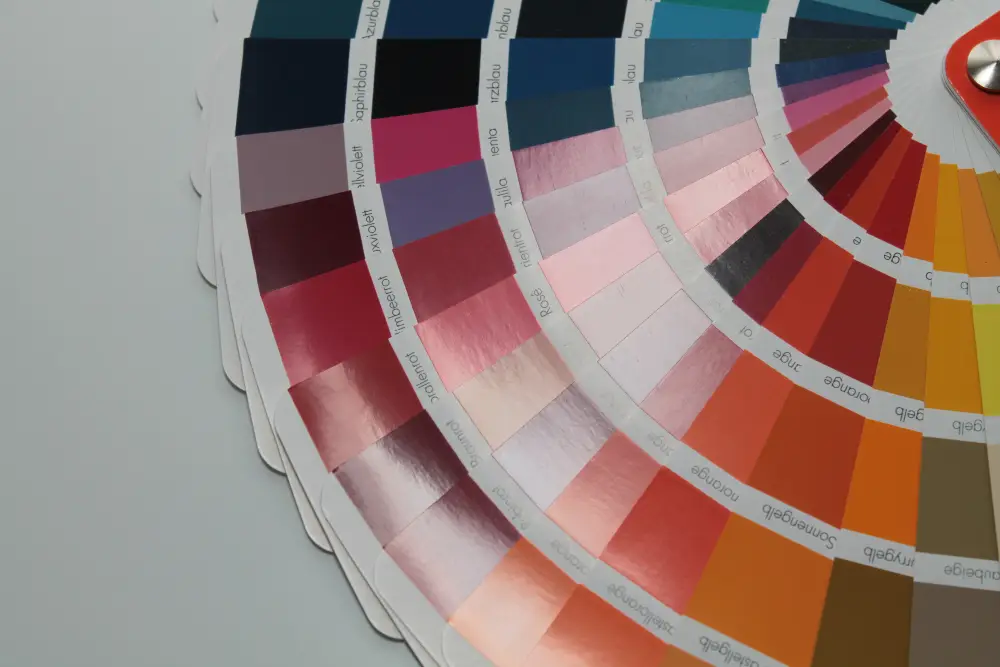
Like most colors, maroon means something definite, but it can also be close enough to other color names that some people may consider the same color.
For example, maroon is very often considered the same color as burgundy.
If there is any difference between the two, on average, it is that maroon is slightly redder while burgundy is slightly more brown.
Maroon might also get called scarlet, crimson, or dark red, all deep shades of red.
If there is anything that distinguishes these deep reds from maroon, it’s just that maroon is slightly more brown.
Finally, carmine and oxblood are rarer and more specialized color names that typically refer to deep yet vivid red colors. These are much more saturated with true red than maroon, which is usually a more earthy tone.
Maroon Color History

Maroon was coined in English as a name for a specific dark red color in 1789, although the color itself had been used without a particular name since the 1500s.
It comes from the french ‘marron’ for chestnut, which has a deep reddish brown color. It’s not quite the same color as maroon, but one can see the inspiration.
Maroon originally meant wild individuals, and we hear it most often in stories when people are marooned on an island because they are causing a problem for society.
Thus, the word evolved from only meaning an unruly person to a person who has been ‘marooned’ on an island as punishment.
The primary uses of the color maroon throughout history include the robes of Buddhist monks and as a popular choice for sports uniforms.
In addition, the rich color pairs well with gold and white, making for a stately combination.
Maroon Color Meaning

Maroon, like most reds, is considered a color of intensity and passion.
It can be associated with anger, danger, and energy, but its more rich brown tone lowers red’s wild sides and brings it down to earth, representing constrained passions.
With its Buddhist associations, it has also gained the meaning of a rich spirituality – of wisdom and inner compassion, two of the key Buddhist traits.
According to color psychology, maroon is a color that brings feelings of responsibility and thoughtfulness.
In addition, it has been shown to increase appetite, raise blood pressure, and boost one’s adrenaline.
In nature, maroon is often associated with autumn, as the colors of the leaves change and a deep red color comes to the fore.
Choosing to wear maroon has been linked to anger and passion, indicating that they may unconsciously feel these things.
Maroon Color Theory
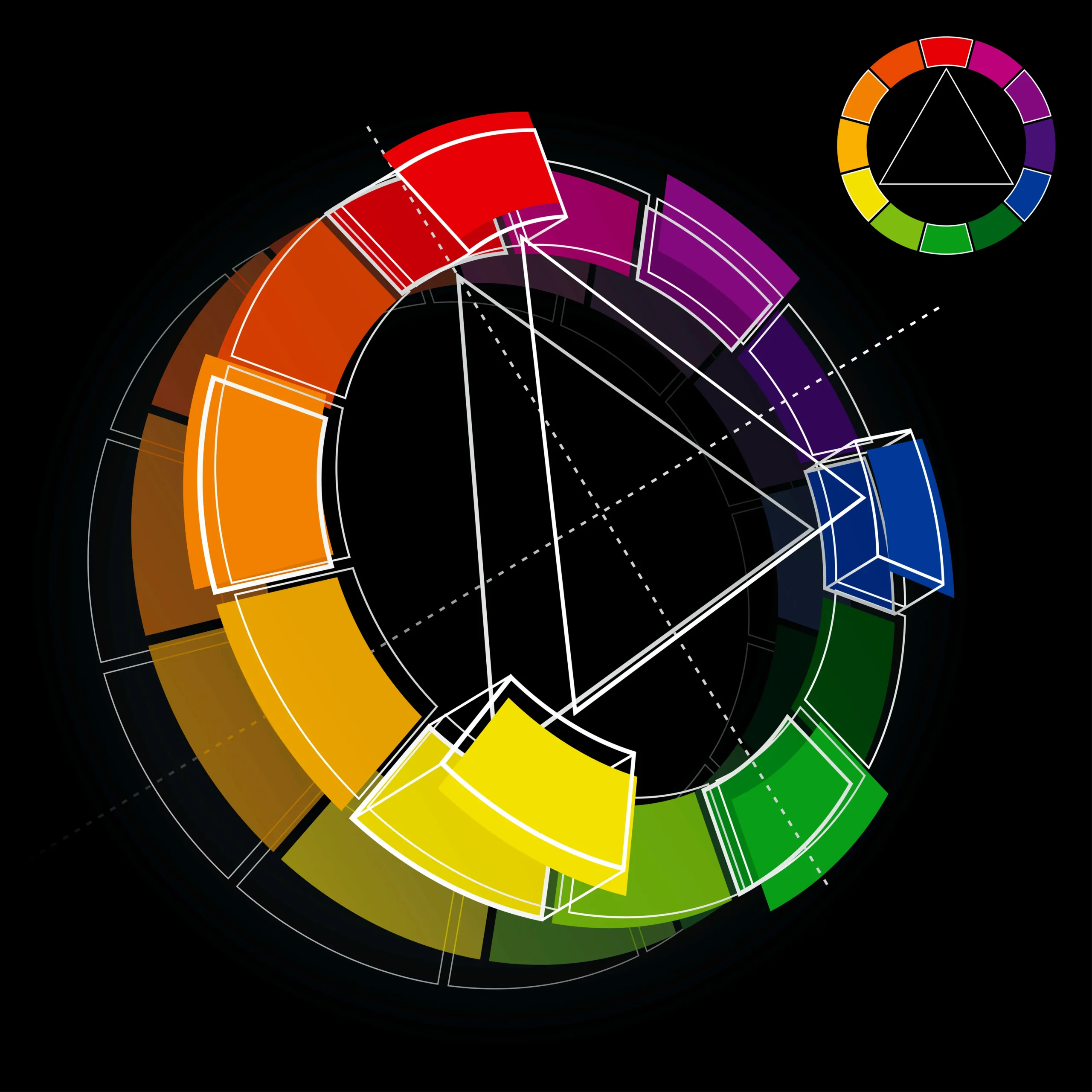
We already know that maroon is a deep reddish-brown color.
However, color theory can help determine what compliments and contrasts that color.
Practicing color theory exercises will further help you understand complementary and contrasting colors.
Three main color schemes work well with any color: monochromatic, complementary, and triadic.
Monochromatic color schemes are the simplest, using the central color in a variety of similar shades.
The mono- means ‘one,’ referring to only focusing on different facets of a single color. It’s a scheme that essentially can’t go wrong but requires you to add variety through texture, pattern, or other details to add interest.
A monochromatic scheme for maroon might involve other dark reds, including crimson, and scarlet, or it may expand into deeper browns like mahogany or more vibrant reds like firehouse red.
What Colors Compliment Maroon
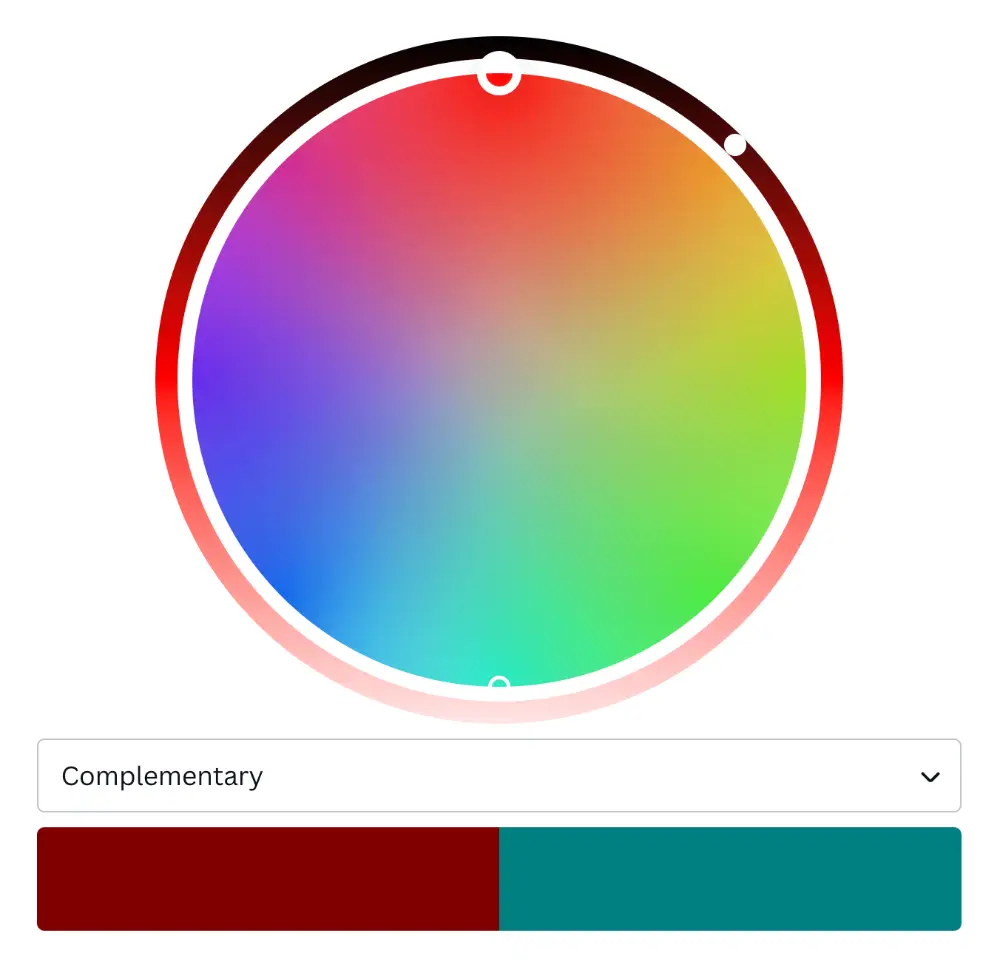
The next type of color scheme is a complementary one, where one takes the opposite color on the color wheel and pairs it with the color at hand.
Again, their contrast helps to bring out the vibrancy in each other.
Maroon’s complementary color is deep green, directly opposite it on the color wheel. The two together create a rich, earthy scene that stands out for its natural feeling.
You can also look at a color’s split complements to help improve the variety of colors in a space.
These are the two colors besides the color’s complementary color.
For maroon, these are teal and green. The complementary color and split complement combine to contrast the primary color without drawing too much attention to themselves.
What Colors Contrast with Maroon
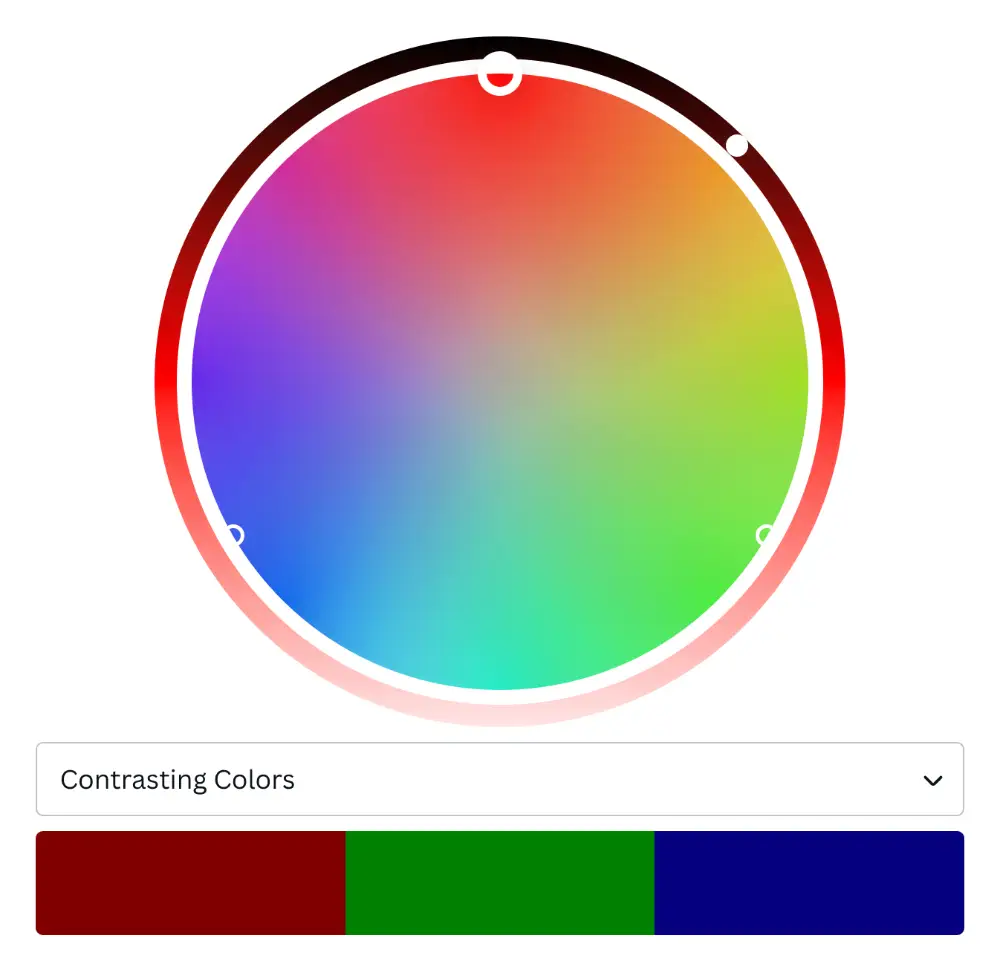
A final option is the triadic color scheme.
For this, you make an equilateral triangle on the color wheel using maroon as one of the points. The other two points on the triangle make the triadic color wheel.
Maroon, its triadic colors are olive green and navy blue.
Together these colors form a perfect triangle on the color wheel.
Triadic colors often look cluttered visually, suitable only for maximalist visual design.
Depending on how you use them, you can go for a more neutral background color, add a maroon sofa, a navy-blue feature fall, and olive accents to round out a room without becoming too overwhelming.
Other contrasting color schemes are possible, but complementary colors and triadic colors are the main ones that are tried and true.
In addition, you can experiment with shades and saturation, texture, and pattern to add further visual interest.
Is Maroon Color a Warm or Cool Color
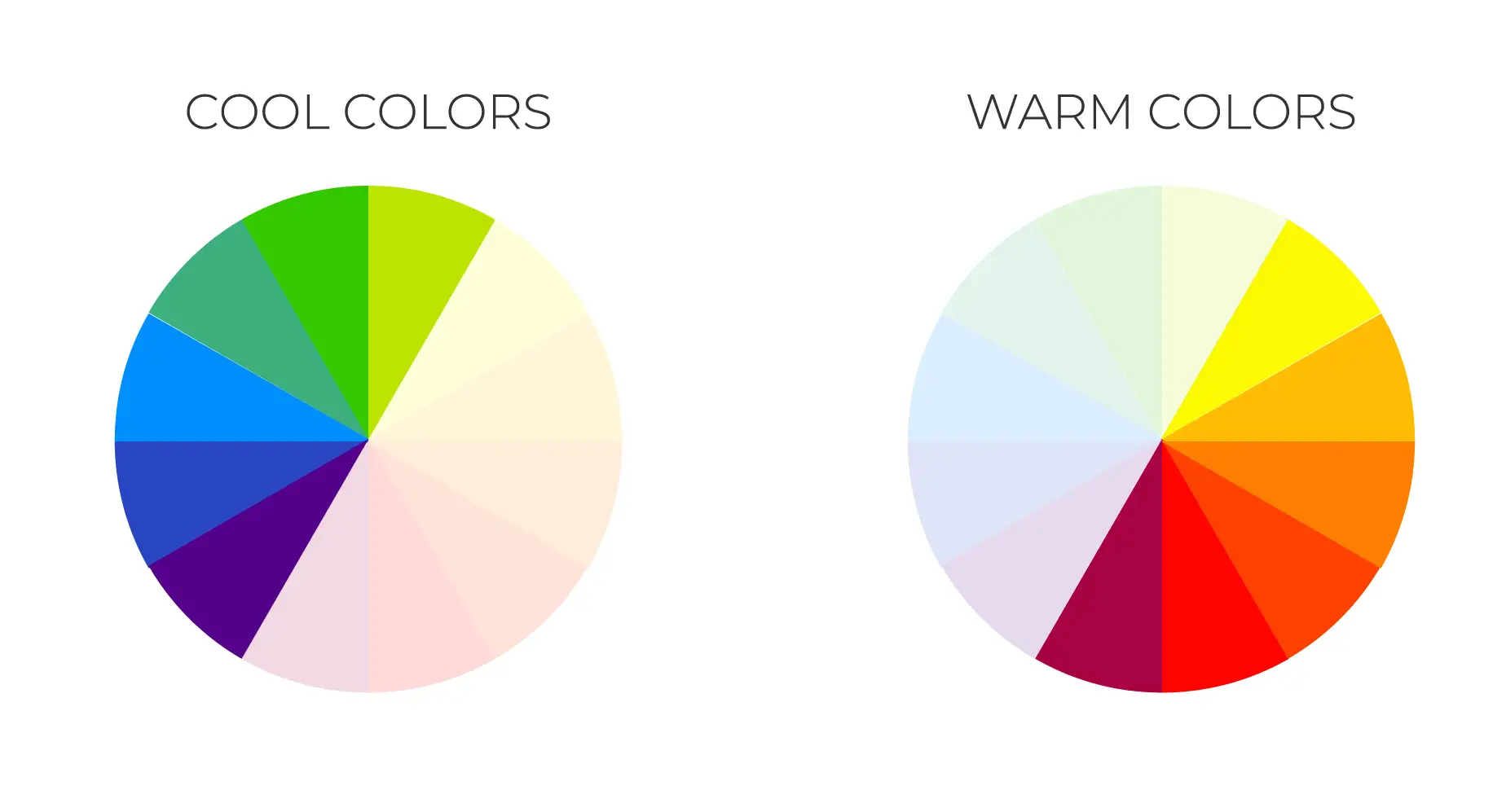
Maroon is a brown-red color that combines red, blue, and yellow in nearly equal parts, with more red overall.
It’s a warm-toned red, making maroon popular in the fall because it looks like the colors of leaves during this time.
Maroon works well with other warm-toned colors.
Its natural tone does not go well with cold or unnatural colors, instead working well with deep colors, muted colors, and natural neutrals.
Shades of Maroon
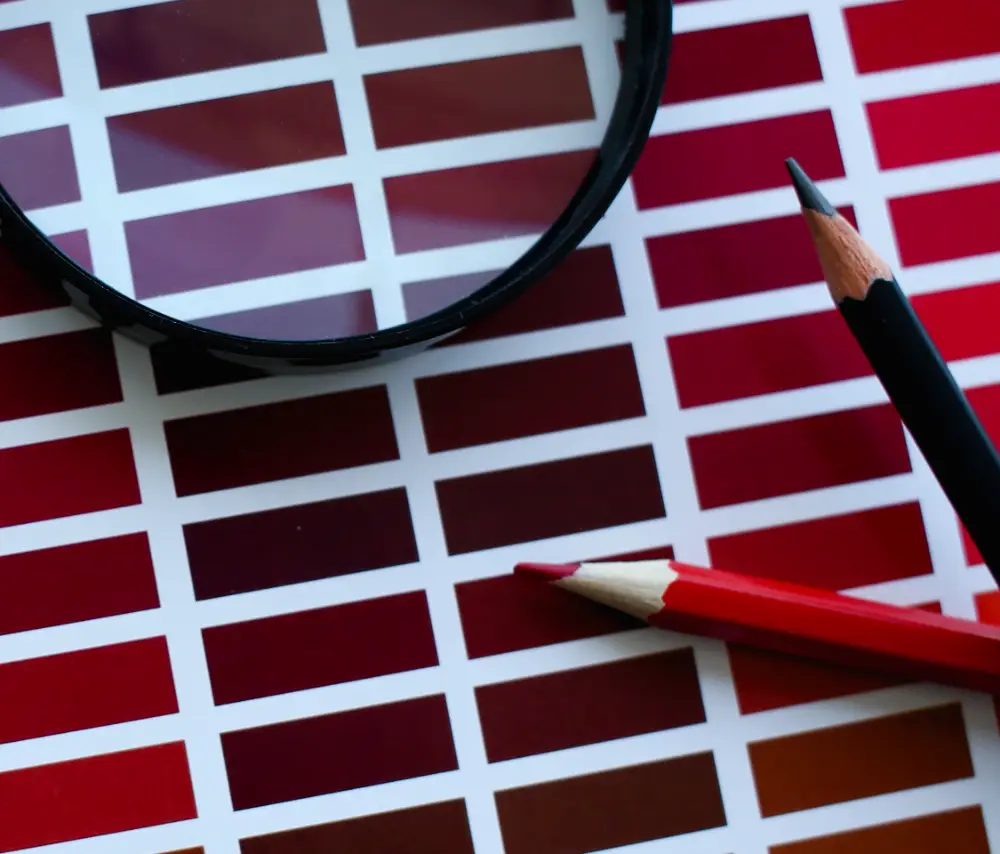
Dark Maroon
| Color Name | Hex Code | RGB Code | CMYK Code |
| Dark Maroon | #3c0008 | 60, 0, 8 | 0, 100, 87, 76 |
Dark maroon is closer to a violet color than traditional maroon.
It’s a mixture of pink, brown, and red. If you want to make your maroon closer to burgundy, but more saturated and less brown, dark maroon is a good choice.
Light Maroon
| Color Name | Hex Code | RGB Code | CMYK Code |
| Light Maroon | #a24857 | 162, 72, 87 | 0, 56, 46, 36 |
Light maroon is almost a dusty rose color, a pink of rich, muted pink.
If you take maroon and pull back some of the rich brown hues, this is the color you get.
Purple Maroon
| Color Name | Hex Code | RGB Code | CMYK Code |
| Purple Maroon | #810541 | 129, 5, 65 | 0, 96, 50, 49 |
Purple maroon maintains the richness and deep saturation of maroon but leans towards a more purple color.
This is similar to how red wines can go from a deep red to a purple-red color. Purple maroon exists on the purple end of the red wine spectrum.
Red Maroon
| Color Name | Hex Code | RGB Code | CMYK Code |
| Red Maroon | #8F0B0B | 143, 11, 11 | 0, 92, 92, 44 |
Red maroon leans towards a more class red color from maroon, removing a good portion of the blue and yellow, which makes it more of a muddy brown color.
Pink Maroon
| Color Name | Hex Code | RGB Code | CMYK Code |
| Pink Maroon | #AD235E | 173, 35, 94 | 0, 80, 46, 32 |
Pink maroon is most similar to light maroon but with an even more profound and rich pink undertone.
You can think of it as a more muted magenta.
Maroon Color Combinations
Maroon is great with various colors, depending on what you want out of a color scheme.
First, you can use reds and browns with purple and pink accents as good shades with maroon in a monochrome color scheme.
Lilac, lavender, purple maroon, and pink maroon all add a richness that adds strength to a monochrome color scheme when paired with maroon. Just be careful to keep some of that original maroon DNA with the other colors chosen.
For a more complex and challenging color scheme, try its complement, deep green, and the greens and teals surrounding it.
This color combination makes for pastoral beauty, similar to the colors of the countryside in autumn or a rainforest lagoon.
Lastly, you can try the most complex color combination, a triadic one.
For maroon, that’s dark blue and dark green-yellow. Together, these three colors can be harmonious, but the balance must be excellent, and they can strain the eyes.
Of course, you can always go with neutrals too, which in maroon’s case, might be best with natural neutrals, such as browns, creams, coppers, and tans.
Since maroon is such an earthy, warm color, it is best paired with similarly natural feelings and warm colors.
How to Make Maroon color
There are two main ways to make maroon.
The first is to mix red and blue in a 5:1 ratio, 5 parts red to 1 part blue.
Then, once you have your dark red, you may add yellow a bit at a time until you achieve the desired maroon color. Then, if it doesn’t look right, just add red or blue as appropriate to fix the ratio.
The other way is to mix red paint with brown paint until it warms up into a maroon color.
How is Maroon Different than other Common Colors
Maroon is rich, almost blood-like red with a brown undertone.
It stands out from other reds due to its muddier, more muted coloration, while it is different than purple by maintaining enough yellow to even out the blue in its base.
We can look at how it’s different from the colors it’s commonly mistaken for.
Maroon vs Burgundy
| Color Name | Hex Code | RGB Code | CMYK Code |
| Maroon | #800000 | 128, 0, 0 | 0, 100, 100, 50 |
| Burgundy | #800020 | 128, 0, 32 | 0, 100, 75, 50 |
Maroon is most often misconstrued as burgundy, but the two colors are different.
Maroon is primarily a mix of red and brown, while burgundy is a mix of red and purple.
Thus, burgundy has a purple undertone, making it colder and less earthy than maroon.
Maroon vs Plum
| Color Name | Hex Code | RGB Code | CMYK Code |
| Maroon | #800000 | 128, 0, 0 | 0, 100, 100, 50 |
| Plum | #dda0dd | 221, 160, 221 | 0, 28, 0, 13 |
Plum is purple with a pinkish undertone, gotten from the color of the plum fruit. It’s much more purple than maroon.
Maroon vs Mahogany
| Color Name | Hex Code | RGB Code | CMYK Code |
| Maroon | #800000 | 128, 0, 0 | 0, 100, 100, 50 |
| Mahogany | #c04000 | 192, 64, 0 | 0, 67, 100, 25 |
Mahogany is another reddish-brown color like maroon. It is most similar to burgundy but less purple and more deeply brown. It gets its name from mahogany wood.
Maroon vs Dark Red
| Color Name | Hex Code | RGB Code | CMYK Code |
| Maroon | #800000 | 128, 0, 0 | 0, 100, 100, 50 |
| Dark Red | #8b0000 | 139, 0, 0 | 0, 100, 100, 45 |
Dark red is often mistaken for maroon when you darken red it tends to look more like brown-red. However, it doesn’t have quite the same undertones as maroon.
Maroon vs Crimson
| Color Name | Hex Code | RGB Code | CMYK Code |
| Maroon | #800000 | 128, 0, 0 | 0, 100, 100, 50 |
| Crimson | #dc143c | 220, 20, 60 | 0, 91, 73, 14 |
Crimson is a deep red color, more saturated with red than maroon is. It gets its name from the dye made of this color from an insect.
Maroon vs Purple
| Color Name | Hex Code | RGB Code | CMYK Code |
| Maroon | #800000 | 128, 0, 0 | 0, 100, 100, 50 |
| Purple | #800080 | 128, 0, 128 | 0, 100, 0, 50 |
Purple is a secondary color between red and blue. It’s quite different from maroon because it has much more blue and doesn’t look as brown.
Maroon vs Magenta
| Color Name | Hex Code | RGB Code | CMYK Code |
| Maroon | #800000 | 128, 0, 0 | 0, 100, 100, 50 |
| Magenta | #ff00ff | 255, 0, 255 | 0, 100, 0, 0 |
Magenta is a bright pink color, almost on the opposite end of the reds than maroon.
Maroon in Fashion
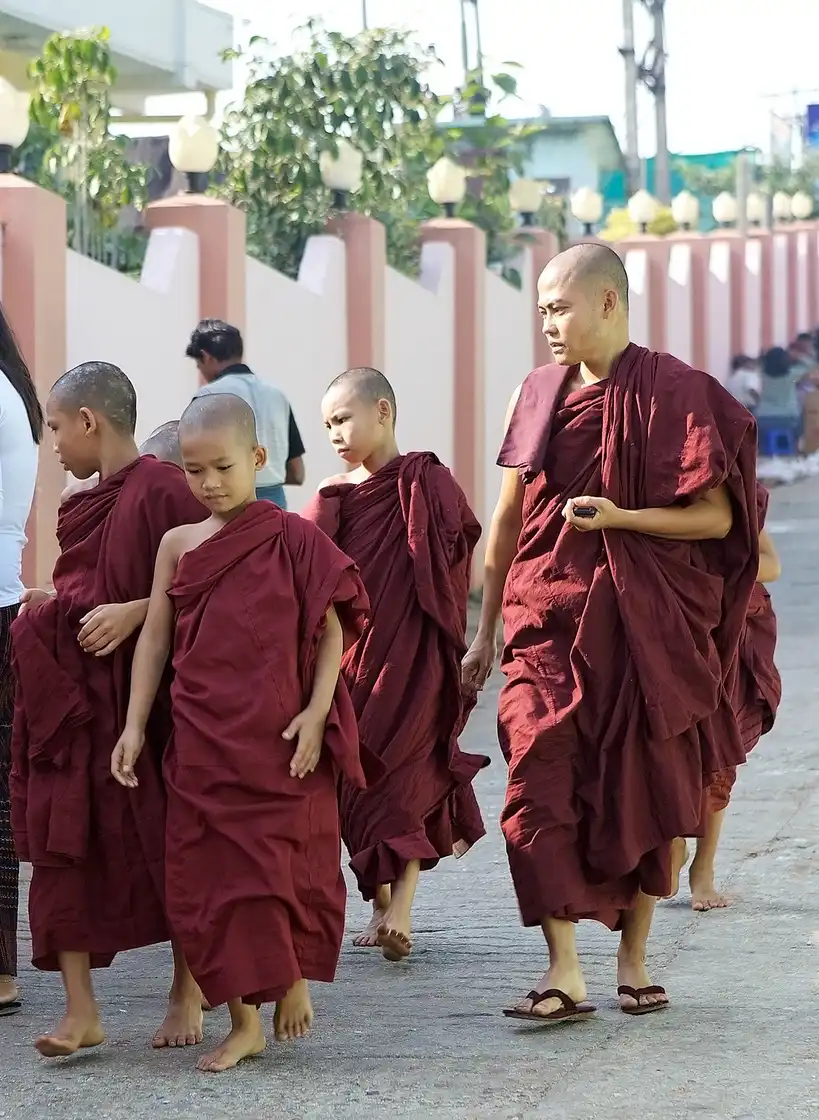
We’ve already discussed the most famous use of maroon in fashion history, and its use in Buddhist robes. But, the color has appeared in many other clothing designs.
For example, the airborne forces in the US have worn maroon berets since 1942. One whole section of the Portuguese Army also wears distinctive maroon uniforms.
Besides its popularity in sports, military, and school uniforms, maroon is also associated with upper-class clothing throughout history.
It’s not a particularly popular color, but maroon coats and thick winter clothing have been popular in the 20th century.
Finally, you’ll see maroon at many sporting events, as it’s popular among team colors.
Conclusion
Maroon is used everywhere, from schools, restaurants, and vehicles, to fashion and home design. It’s both a popular school color, perhaps related to Havard’s use of a nearly maroon color, and very popular as a team color.
Since it can trigger one’s appetite, it’s also common on restaurant logos and for the restaurants themselves, inside and outside.
When used in homes, it is often associated with sophistication and expertise.
Thus, maroon has a long and rich history that still finds its place in many aspects of society today.
Maroon Color FAQ
What color is maroon?
Maroon is a color similar to burgundy, found between red and brown. This rich color has been popular in sports and school uniforms worldwide due to its symbolism of restrained passion and a deep heart. Compared with burgundy, it has more of a warm, red undertone, while burgundy has more of a purple, slightly colder undertone.
What colors look good with maroon?
Depending on what kind of color scheme you’re going for, maroon works well with deep greens as its complementary color, but can also work with olive green and navy blue, forming its triadic color scheme.
Of course, you can always go with similar colors for a monochromatic play, such as rose, aubergine, and mahogany. Or, you can try natural neutrals, which make for great secondary colors for maroon.
What colors make maroon?
Red and brown together make maroon. To get brown, you can mix the three primary colors of red, blue, and yellow together. Then, add more red to reach a proper maroon color.
Another method that will work is beginning with a blue base and then any 5 equivalents to that of red, for a 5:1 ratio of red to blue. Next, add a small amount of yellow until it reaches that brownish look.

